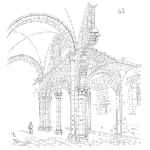
The document by Nowlan and Heap
Part of keeping equipment operational is affecting repairs appropriately. Sometimes it makes sense to replace an element of some equipment before it fails, i.e. automobile tires as the tread wears. Sometimes is doesn’t make sense to repair a functioning unit as the result would be a system that is less reliable then before.
Understanding the equipment’s range of failure mechanisms and failure patterns is a start. A lot of what is in the ASQ CRE BoK is very well covered by the report by Nowlan and Heap (1978) Reliability Centered Maintenance.
The complete work is reproduce here and I highly recommend you read it. If you would like to take a copy into the exam with you as a reference, download and print.
While this work doesn’t cover everything about maintenance, it does an excellent job (better than I could) of covering RCM.
Related:
Data to collect to optimize maintenance (article)
Field Industry and Public Failure Data (article)
Benefits of Reliability Engineering (article)
 Ask a question or send along a comment.
Please login to view and use the contact form.
Ask a question or send along a comment.
Please login to view and use the contact form.
There are a number of published guidelines and other references to describe the principles and requirements of Reliability Centered Maintenance. Some useful references include:
• Reliability-Centered Maintenance by F. Stanley Nowlan and Howard F. Heap of United Airlines, issued in December 1978.
• ATA MSG-3 “Operator/Manufacturer Scheduled Maintenance Development,” updated in March 2003.
• NAVAIR 00-25-403 “Guidelines for the Naval Aviation Reliability-Centered Maintenance Process,” issued in February 2001 and updated in July 2005.
• SAE JA1011 “Evaluation Criteria for Reliability-Centered Maintenance (RCM) Processes,” issued in August 1999.
• SAE JA1012 “A Guide to the Reliability-Centered Maintenance (RCM) Standard,” issued in January 2002.
• Reliability-Centered Maintenance (2nd Edition) by John Moubray, published in 1997.
• Reliability Centered Maintenance: Gateway to World Class Maintenance by Anthony M. Smith, published in 1993.
• “Practical Application of Reliability-Centered Maintenance” by the Reliability Analysis Center, issued in 2003.
• MIL-STD-2173(AS) “Reliability-Centered Maintenance Requirements for Naval Aircraft, Weapons Systems and Support Equipment,” issued in January 1986.
• “NASA Reliability Centered Maintenance Guide for Facilities and Collateral Equipment,” issued in February 2000.
RCM gives a method of establishing a scheduled (preventive) maintenance programme which will effectively and efficiently achieve the inherent reliability and safety levels of equipment. RCM concept uses a decision logic to evaluate and construct maintenance tasks which are based on the equipment function and failure modes.
It is a methodology which can be applied to the development of a preventive maintenance programme and results in improved component reliability and minimized overall programme costs. The intended end result is improved overall equipment safety. availability and economic operation.